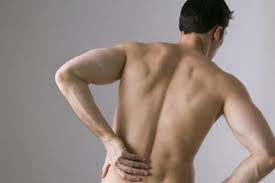Everyday, all over the world, people experience body aches and pains. The most common of these pains are those located in the lower back and hips. Simultaneous pain in the lower back and hips should be given much attention because this may very well be a sign of some underlying condition. There are many possible apparent causes of lower back and hip pain. Gaining weight gives additional pressure on your lower back muscles. This presses on the nerves and the circulation in that area. Weak abdominal muscles are unable to support the lower back muscles. Abdominal muscles are our body’s natural belt. If this part is weak, then the lower back suffers. Increased wheat and meat intake in your diet cause increased pain and inflammation. Other similar causes of lower back and hip pain are lack of water in your body, and a very soggy, droopy bed.
Aside from these reasons, there are some very overlooked caused of back and hip pain. These are the physical changes in your body that have to paid more attention to so that lower back and hip pain may finally be corrected and avoided. Here are some of these overlooked caused that you may want to discuss with your attending physician:
1. Distorted posture
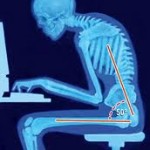 Distorted posture can indeed cause lower back and hip pain. This is because of the increased torsion in the pelvic area that causes a discrepancy of the functional leg length. This means that the body is forced to hold itself upright for stability. The over compensating muscles of the lower back and leg have decreased circulation. This makes the lower back and legs ischemic and very painful.
Distorted posture can indeed cause lower back and hip pain. This is because of the increased torsion in the pelvic area that causes a discrepancy of the functional leg length. This means that the body is forced to hold itself upright for stability. The over compensating muscles of the lower back and leg have decreased circulation. This makes the lower back and legs ischemic and very painful.
2. The iliopsoas syndrome
 The iliacus abd the psoas muscles of the lower back are the usual target areas of lower back and hip pain. When the psoas muscles are moved, usually by standing or sitting, pain is experienced; pain in the hips result from ischemic and locked iliacus muscles. Â Even if there is direct, manual therapeutic treatment of the hip and gluteal muscles, hip pain will still persist. This is why iliopsoas syndrome should be thoroughly dealt with.
The iliacus abd the psoas muscles of the lower back are the usual target areas of lower back and hip pain. When the psoas muscles are moved, usually by standing or sitting, pain is experienced; pain in the hips result from ischemic and locked iliacus muscles. Â Even if there is direct, manual therapeutic treatment of the hip and gluteal muscles, hip pain will still persist. This is why iliopsoas syndrome should be thoroughly dealt with.
3. The piriformis syndrome
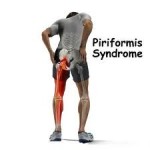 This syndrome turns out when the piriformis muscle entraps the sciatic nerve. The pain felt is usually in the area of the buttocks that radiate into the hip joint.
This syndrome turns out when the piriformis muscle entraps the sciatic nerve. The pain felt is usually in the area of the buttocks that radiate into the hip joint.
4. Very tight leg muscles
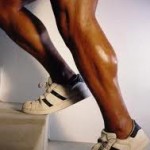 Lower back and hip pain should also be caused by the shortness and tightness of the leg muscles. This is one of the easiest ones to treat. Compensation usually happens in the muscles of lower back and hip. You can test yourself by looking at your range of motion. If you cannot sit in a cross-legged position, can’t reach your toes, then you are most probably experiencing tightness in your hamstrings and in your hips.
Lower back and hip pain should also be caused by the shortness and tightness of the leg muscles. This is one of the easiest ones to treat. Compensation usually happens in the muscles of lower back and hip. You can test yourself by looking at your range of motion. If you cannot sit in a cross-legged position, can’t reach your toes, then you are most probably experiencing tightness in your hamstrings and in your hips.
5. Myofascial triggers
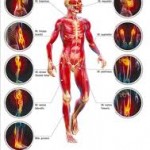 Myofascial triggers located in the iliopsoas, piriformis, gluteals, quadratus lumborum, and deep hip rotators produce significant lower back and hip pain. If the pain that you experience seems to move from one place to another, this could mean that one of the muscles in the lower back and leg has very active trigger points. Pain can fluctuate when this happens.
Myofascial triggers located in the iliopsoas, piriformis, gluteals, quadratus lumborum, and deep hip rotators produce significant lower back and hip pain. If the pain that you experience seems to move from one place to another, this could mean that one of the muscles in the lower back and leg has very active trigger points. Pain can fluctuate when this happens.
6. Dysfunction of the sacroiliac joint
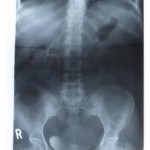 This happens when one of the joints in the sacroiliac region is not moving or is stuck. This could happen with torsion in the pelvis. This, therefore, brings about lower back and hip pain. There can be times when the pain could be found in the sacroiliac joint. The sacroiliac joint on the opposite side may become too loose to compensate for the other sacroiliac joint that is locked. The loose or hyermobile joint then becomes the source of the lower back and hip pain.
This happens when one of the joints in the sacroiliac region is not moving or is stuck. This could happen with torsion in the pelvis. This, therefore, brings about lower back and hip pain. There can be times when the pain could be found in the sacroiliac joint. The sacroiliac joint on the opposite side may become too loose to compensate for the other sacroiliac joint that is locked. The loose or hyermobile joint then becomes the source of the lower back and hip pain.
If you experience chronic or acute lower back and hip pain, there is no reason for you to panic or excessively worry. Lower back and hip pain is something that could be improved overtime. The moment you perceive that pain in the lower back and hip, you should have yourself examined by your doctor. It won’t hurt if you allow yourself to be subjected by specific tests to make sure that there will be no overlooked causes of lower back and hip pain such as those specified above.
You should always work with your doctor to make sure that all other conditions are ruled out. With this, certain lifestyle changes may be applied and proper medication and therapy may be prescribed.
